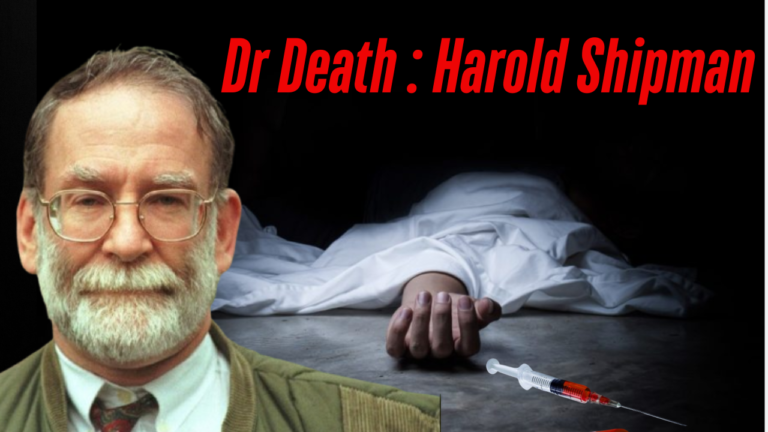Few figures cast a shadowy presence over criminal history as dark as Dr. Harold Shipman aka “Doctor Death”. The British doctor’s very name quickly became a byword for chilling, unspeakable acts of evil. The story of Dr. Shipman is one of betrayal, manipulation and the scale of trust it’s possible for one human being to brutally abuse.
Legend of Lord of Life:
Harold Shipman was born on January 14, 1946 in Nottingham, England. Evidently, a career in medicine was always in his stars. A bright young man, Doctor Shipman began to study medicine after he left school and earned a degree from Leeds School of Medicine in 1970. Following medical school, Shipman became a general practitioner for the West Yorkshire town of Todmorden. Deathbed of Suspicion: It quickly became apparent, however, that appearances with Shipman were deceiving in the extreme. In the early 1990s, local undertakers in Todmorden noticed a huge spike in the number of Shipman’s elderly women patients who were dying. Concerns were raised and, yet, several initial investigations were unable to turn up concrete evidence of wrongdoing.
Doctor Death got caught
The true extent of Shipman’s crimes began to emerge in 1998. Following the death of Kathleen Grundy, a wealthy widow and former mayoress of Hyde, Greater Manchester, an inquiry was launched. Shipman had certified Grundy’s death and arranged for her cremation, leaving her estate – worth over £380,000 – to himself. When Grundy’s will was discovered to have been forged, however, detectives were alerted to a darker truth. Their investigations revealed a pattern of deceit and death. Doctor Shipman’s medical records showed that a remarkable number of patients had passed away under his care, often in puzzlingly similar circumstances. The evidence painted a terrifying picture, Shipman had been delivering fatal doses of diamorphine, a powerful opiate, to oblivious victims.
The Scale of the Atrocities:
The rotten core of the “kindly doctor” had been well and truly exposed. As his activities came under scrutiny, the number of Shipman’s atrocities escalated frighteningly. Harold Shipman may have killed over 200 of his patients during his tenure as a GP a horrific true crime that shocked Britain . His victims were elderly women for the most part, selected for their frailty and assumed lack of suspicion.

Shipman’s method was as frightening and clinical as the man himself. He would visit elderly patients in their homes under the pretense of providing medical care. In reality, he was using these house calls as cover for the administration of lethal injections. Later, he would claim that he had been providing them with pain relief, but an investigation ultimately revealed what Shipman had long ago stopped trying to hide; he was executing them. An estimated 250 patients died under Shipman’s care, though the true number was almost certainly higher. His crimes remained unknown because he was systematically careful in how he executed his elderly patients and because he was canny about where he conducted his practice. One medical professional nicknamed Shipman, “Dr. Death,” in 1975 after discovering that he had forged the will of one of his patients in order to benefit financially Following a string of deaths under his watch, he was charged with the murder of 15 patients, as well as forging the will of another.
On January 31, 2000, Harold Shipman was found guilty on all counts and sentenced to life imprisonment. Specifically, he was given a whole-life tariff, meaning life without the possibility of parole. The case of Harold Shipman was a massive wake-up call for the medical community, leading to massive changes in how healthcare is delivered and regulated. Shipman revealed a significant blind-spot that allowed him to cut a murderous swath across Central England before he was finally apprehended. The Shipman Inquiry was much broader than just a quest to discover and indict him, though. Establishing that Shipman acted alone was just the first step in a long process of healthcare reform and professional oversight.
Harold Shipman’s name remains synonymous with horror and betrayal, even some 20 years after he was handed a life sentence for his crimes. His legacy is a stark and terrifying reminder of the capacity for evil that lurks beneath the veneer of respectability, and his victims are the innocent, all too ordinary individuals whose lives were ended at the behest of a ruthless killer.
In the end, the story of “Doctor Death” is a chilling cautionary tale; a grim reminder of the need for vigilance and accountability in the face of malevolence. Harold Shipman’s campaign of murder may have claimed countless lives, but it also sparked an unquenchable quest for his victims and a determination to ensure that his atrocities would never be repeated.



